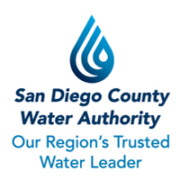Sections of the regional aqueducts in San Diego County will be shut down over the next six months for maintenance projects to ensure a safe and reliable water supply for the region. The San Diego County Water Authority and its member agencies are coordinating on the annual “shutdown season” to minimize impacts to residents and businesses, who are not expected to face service disruptions.
Starting October 16, a portion of Pipeline 5 will be out of service for 10 days to accommodate annual maintenance on the entire untreated water system and to prepare for rehabilitation of other sections of the pipeline. The Water Authority has worked for months to coordinate with the affected retail water agencies: Olivenhain Municipal Water District, San Dieguito Water District, Santa Fe Irrigation District, Helix Water District, Sweetwater Authority, and the cities of San Diego, Oceanside, Ramona, Poway and Escondido. Customers should check with their water utility if they have questions about localized impacts.
Proactive asset management – regional aqueducts and Pipeline 5
The Pipeline 5 work will rehabilitate about 5,000 feet of 96-inch diameter prestressed concrete cylinder pipe by inserting and securing a steel pipe liner. This portion of the pipeline is within the City of San Marcos, between North Twin Oaks Valley Road and the Water Authority’s Twin Oaks Water Treatment Plant. When completed, approximately 50 miles, or 61% of the Water Authority’s existing prestressed concrete cylinder pipe will be relined.
“Proactive asset management and coordination with our member agencies ensures that the region’s major water infrastructure reliably serves the region’s 3.3 million residents,” said Eva Plajzer, the Water Authority’s director of operations and maintenance. “We have worked with our member agencies for several months to minimize any impacts to residents and businesses.”
Safe and reliable water supplies
The Water Authority’s Asset Management Program is a key element of providing safe and reliable water supplies to the region. The agency continually assesses and inspects its 310 miles of large-diameter pipelines, which provide treated and untreated water to 24 member agencies in San Diego County. The program is widely recognized for pioneering work – including a patented inspection device – that promotes water affordability by avoiding costly unplanned disruptions in service. Maintenance work is scheduled during low-demand periods to minimize impacts on water service.
Constructed in 1982, Pipeline 5 is a vital component of the Water Authority’s regional water infrastructure system, delivering untreated supplies from Lake Skinner in southwest Riverside County to the Lower Otay Water Treatment Plant in southern San Diego County.
In addition to the October upgrades on Pipeline 5, a series of three shutdowns on the Water Authority’s First Aqueduct is scheduled from December through April, when portions of the aqueduct will be relined, along with other maintenance.
(Editor’s note: The Olivenhain Municipal Water District, San Dieguito Water District, Santa Fe Irrigation District, Helix Water District, Sweetwater Authority, and the cities of San Diego, Oceanside, Ramona, Poway and Escondido are 10 of the San Diego County Water Authority’s 24 member agencies that deliver water across the metropolitan San Diego region.)




